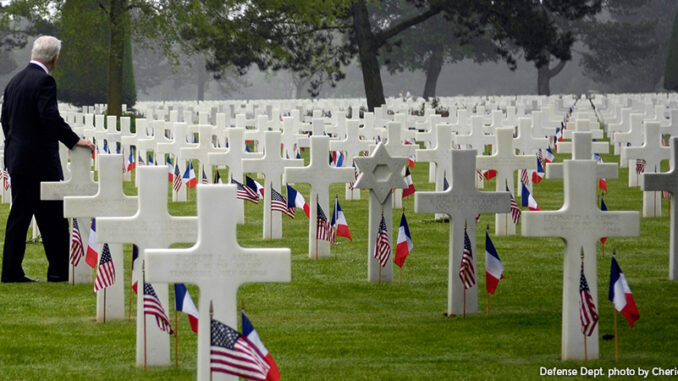

At btw, we feel it is important to commemorate important events of history, especially those that honor the men and women who fought to secure our valued freedoms. June 6 marked the 70th anniversary of D-Day, the massive military invasion that marked the beginning of the end of World War II. The war took place between 1939 and 1945 and was fought across Europe, Russia, North Africa and Asia. The opposing sides were the Allies (made up of 25 countries including the United States, England and France) and the Axis Powers (made up of twelve countries including Germany, Japan and Italy).
Operation Overlord
In war, there are separate battles or operations. D-Day (named for a military code) is the name commonly associated with Operation Overlord, which led to the Battle of Normandy. This operation, led by general (and future president) Dwight D. Eisenhower, required two years of careful planning. Maps were made, land analyzed, training exercises planned and details coordinated to fine detail.
Beginning in 1939, Germany, led by Chancellor Adolf Hitler, invaded and then took control of Poland, Belgium, the Netherlands and eventually France. The Allies were determined to reclaim them. On June 6, 1944, the US, British and Canadian forces of the Allied Troops landed on five different beaches along the coast of Normandy, France. The “first wave” of invasion involved around 150,000 soldiers and more than 50,000 vehicles (including ships, tanks and aircraft). Nearly two million more followed, making it the largest seaborne invasion in history.
The fighting lasted three months, as the Allies fought their way through the country, driving back the Axis forces. They finally reached the border of Germany on September 16. In total, 100,000 soldiers on both sides, plus 20,000 French citizens lost their lives to reclaim France and ultimately liberate the Nazi concentration camps.
Honoring Those Who Served

D-Day commemoration ceremonies were held across the United States, including the World War II memorial in Washington, D.C, attended by President Eisenhower’s granddaughter and President Franklin D. Roosevelt’s great-grandson. In England, Prince Charles of Wales laid a wreath near Pegasus Bridge, a strategic crossing occupied by British troops. The Queen of England led a service made up of world leaders.
President Obama joined French president Francois Hollande, Russian President Vladimir Putin, and heads of state from 14 other nations for a ceremony at Sword Beach, one of the five Allied troop landing points, followed by a visit to Colleville-sur-Mer, a U.S. war cemetery. They were joined by a crowd of 14,000 people, including around 200 D-Day veterans, many of them in their nineties. In his speech, Obama said our freedoms were, “written in the blood on these beaches, and it will endure for an eternity.” A corps of F-15 fighter jets flew above the crowd in “missing man” formation as a tribute to those fallen.
